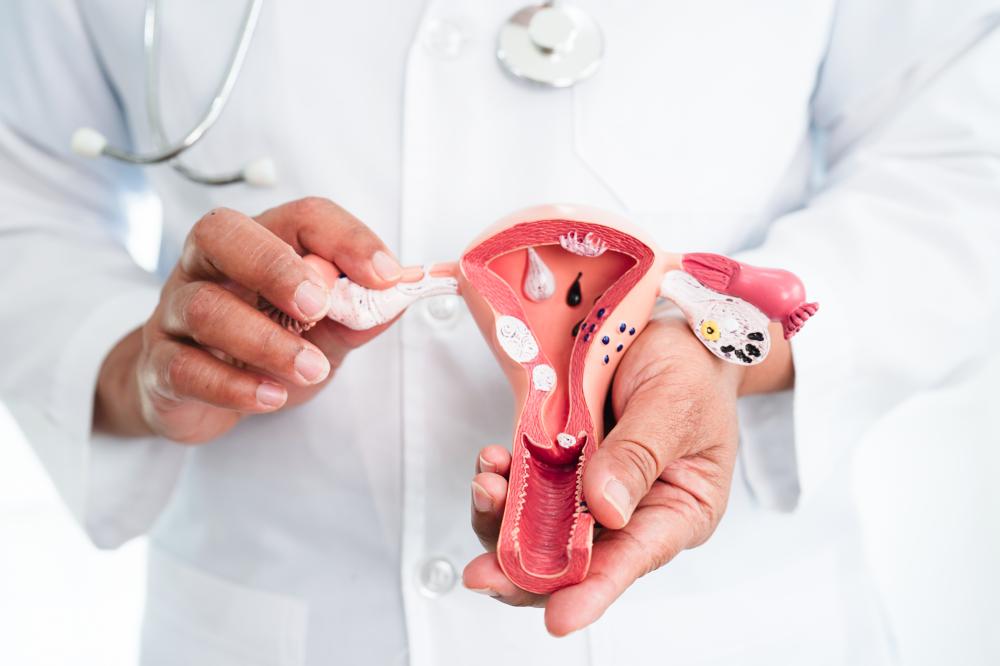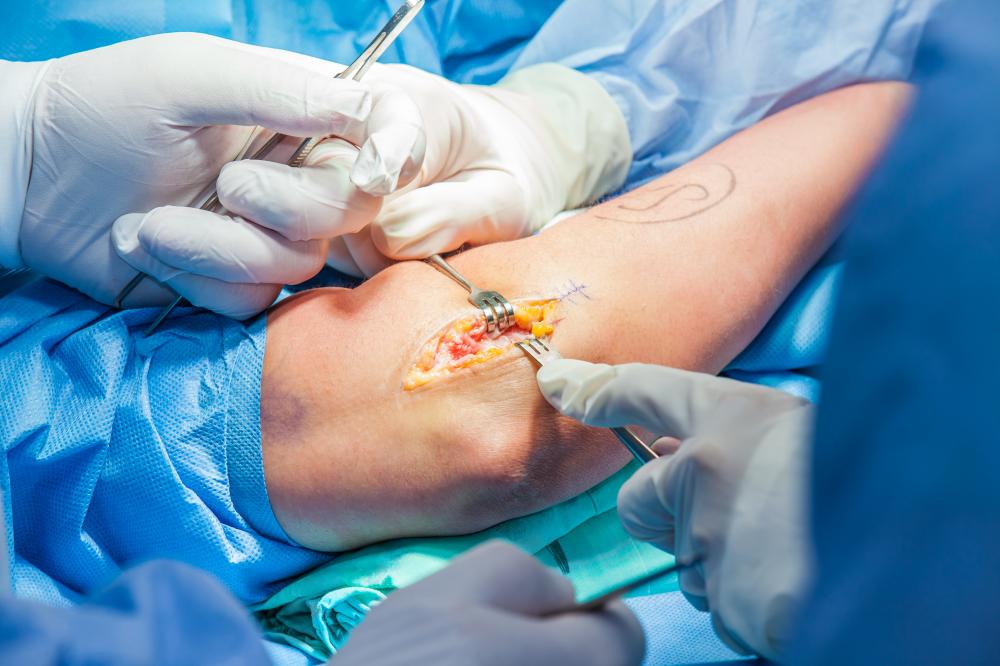Table of Contents
Understanding Pediatric Rectal Prolapse

At Pacific Coast Pediatric Surgery, we often encounter cases of pediatric rectal prolapse, a condition that can cause considerable concern for parents. Pediatric rectal prolapse occurs when the rectum’s lining protrudes through the anus due to weakened pelvic muscles or ligaments. Factors leading to this condition may include chronic constipation, severe diarrhea, or certain underlying disorders like cystic fibrosis, which place undue strain on the pelvic floor muscles.
It’s a condition that can be alarming at first glance, but rest assured, our team, led by Dr. Philip K. Frykman, approaches each pediatric rectal prolapse treatment with meticulous care, considering the unique circumstances of each child. We strive to provide a supportive atmosphere for both patients and their families, guiding them through diagnosis to the appropriate treatment.
Diagnostic Approach to Pediatric Rectal Prolapse
Diagnosing pediatric rectal prolapse begins with a thorough physical examination, often revealing the prolapse upon visual inspection. We may also utilize imaging tests, such as MRI or colonoscopy, to ensure a comprehensive evaluation. Identifying the cause of the prolapse is critical in tailoring the pediatric rectal prolapse treatment for each child.
Our team understands the emotional toll of these medical procedures on both the child and their family, which is why we emphasize a gentle approach. By explaining each step with empathy and providing a child-friendly environment, we ease the anxiety that often comes with medical examinations and diagnostic tests.
Non-Surgical Management of Pediatric Rectal Prolapse
In many instances, pediatric rectal prolapse treatment can begin with non-surgical methods, particularly when the condition is mild. Dietary modifications, such as increasing fiber intake, and the use of stool softeners can often alleviate symptoms and prevent further prolapse. Ensuring that the child maintains regular bowel movements is a foundational aspect of our treatment strategy.
Physical therapy designed to strengthen the pelvic floor muscles may also be beneficial. Each regimen is tailored to the child’s age and overall health status to ensure it is both effective and manageable. Our collaborative approach involves not only the medical team but also the family, as we empower them with knowledge and practical advice for managing the condition at home.
At Pacific Coast Pediatric Surgery, we also explore alternative options like biofeedback therapy, which can help some children gain better control over their pelvic muscles, potentially preventing the recurrence of rectal prolapse.
Surgical Treatment Options
When non-surgical methods are insufficient, surgery may be the next step in pediatric rectal prolapse treatment. Our surgical interventions are carefully selected based on the child’s specific condition and overall health. Common procedures include rectopexy, where the rectum is secured to the surrounding structures, or sigmoid resection, which removes a section of the colon that may be contributing to the prolapse.
Dr. Frykman’s vast experience with advanced pediatric surgical techniques ensures that the most minimally invasive methods are used wherever possible. This approach leads to reduced recovery time and helps minimize the stress on the young patient and their family.
Our dedication to using evidence-based treatments aligns with our commitment to providing care that is not only effective but also empathetic. Recognizing that surgery can be a significant event in a child’s life, we offer comprehensive support throughout the process, from pre-operative visits to post-operative care.
In our hands, pediatric rectal prolapse treatment is more than a medical procedure; it is a journey we navigate together with our patients and their families, ensuring that every child receives the individualized care they need to thrive.
Personal Touch in Treatment
As a parent and a surgeon, Dr. Frykman brings a unique perspective to pediatric rectal prolapse treatment. Having experienced serious illness within his own family, he knows the fears and questions that can flood a parent’s mind. This personal insight directly influences the compassionate care we provide at Pacific Coast Pediatric Surgery.
Our approach to treatment is characterized by the understanding that each family is trusting us with their most precious members. We honor this trust by ensuring that every child receives not only the highest quality medical care but also a nurturing and patient-centered experience.
Stories from families like Joy C. from Pasadena, who has expressed deep trust in Dr. Frykman’s capabilities, inspire us to continue to refine our approach to pediatric rectal prolapse treatment, always putting the child’s well-being at the heart of what we do.
Our practice is a beacon of hope for families facing pediatric surgical issues. With our proven track record and the commitment to treat every child as our own, Pacific Coast Pediatric Surgery remains at the forefront of pediatric rectal prolapse treatment.
Understanding Pediatric Surgery for Rectal Prolapse
As specialists at Pacific Coast Pediatric Surgery, we often see families grappling with the distressing condition of rectal prolapse in their children. This occurs when the rectum, the lower segment of the intestine, slips outside through the anus. The image is hard to bear, and the implications can be quite serious without proper treatment. Pediatric Surgery for Rectal Prolapse aims to correct this unfortunate displacement, and we approach each case with a mixture of scientific rigor and heartfelt care.
Our first step in tackling Pediatric Surgery for Rectal Prolapse is to diagnose the extent and severity. Diagnostic tools like MRI scans and rectal examinations play a pivotal role. In mild situations, non-surgical methods, such as dietary changes and medications, can offer relief. However, when these aren’t enough or the prolapse is recurrent, it’s our surgical expertise that comes to the forefront.
The surgeries we perform range from minimally invasive procedures to more complex ones like rectopexy, where we secure the rectum to the spine to prevent future prolapses. Each Pediatric Surgery for Rectal Prolapse is finely tuned to the child’s physiology, ensuring the highest chance of a successful outcome. Our methods reflect the latest advancements in pediatric surgical care, ensuring we’re providing our young patients with the best possible interventions.

The Compassionate Approach to Pediatric Surgery for Rectal Prolapse
When a child requires Pediatric Surgery for Rectal Prolapse, it resonates deeply with me, both as a surgeon and as a father. I know the anxiety parents feel when their child is wheeled into surgery. That’s why each procedure I perform is done with a precision and gentleness that I would demand for my own children. It’s not just about technical excellence; it’s about nurturing trust and providing solace to worried families.
My experience extends beyond our clinic in Thousand Oaks. I’ve had the privilege of performing Pediatric Surgery for Rectal Prolapse in unique settings globally, bringing relief to those who might otherwise go without. These missions enrich my practice and the outcomes for my patients back home. I bring back not just new techniques but a reinforced belief in surgery’s transformative power.
In the four walls of our operating rooms, we see more than clinical cases; we see hopes, dreams, and futures. Pediatric Surgery for Rectal Prolapse is as much a journey of care as it is a medical pathway–each stitch a step towards normalcy, each successful recovery a testament to the resilience of youth. Our multidisciplinary team understands this and works tirelessly to ensure each child’s return to the joys of childhood.
Our hands may perform the surgeries, but it’s our hearts that guide them. Pediatric Surgery for Rectal Prolapse is as much about medical expertise as it is about the compassion we infuse in our work. At Pacific Coast Pediatric Surgery, we don’t just repair anatomical anomalies; we mend spirits and reassure families that their children are in the safest of hands.
Innovative Solutions in Pediatric Surgery for Rectal Prolapse
At Pacific Coast Pediatric Surgery, we pride ourselves on pushing the envelope in Pediatric Surgery for Rectal Prolapse. Reinventing and refining surgical approaches, from minimally invasive laparoscopic techniques to the more traditional yet perfected open surgeries, our quest is to minimize discomfort and maximize recovery. We offer a spectrum of cutting-edge interventions tailored to each unique case, always with an eye on emerging research and methodologies.
Our innovative mindset extends to post-operative care, where we integrate novel pain management strategies and rehabilitation exercises. Each step of the way, in Pediatric Surgery for Rectal Prolapse, we’re looking for better, smarter ways to facilitate healing. It’s not just about today’s success but about ensuring a future unfettered by health constraints.
As we craft these solutions, we’re acutely aware of the ever-changing landscape of pediatric healthcare. Pediatric Surgery for Rectal Prolapse is a field ripe for innovation, and we believe it’s our responsibility to lead this charge. The families who entrust us with their children’s care deserve nothing less than our relentless pursuit of excellence in surgical care.
Pediatric Surgical Excellence at Pacific Coast Pediatric Surgery
At Pacific Coast Pediatric Surgery, our mission resonates with the heart of Thousand Oaks as we offer a sanctuary of healing for the youngest members of our community. Our esteemed leader, Dr. Philip K. Frykman, brings a multifaceted proficiency in pediatric surgical care, allowing us to tackle complex pediatric conditions with dexterity and compassion. Our operative scope includes the precise handling of appendicitis, thoracic anomalies, and intricate colorectal challenges.
Our Pediatric Surgical Center Thousand Oaks is not just a facility; it’s a place where science and empathy converge. From prenatal consultations to managing childhood tumors, our approach is rooted in a personalized touch, extending beyond mere treatment to provide holistic care. Each child’s journey is unique, and we tailor our strategies to align with their specific health narratives, ensuring that their stories unfold in the most nurturing way possible.
Surgical intervention, particularly in children, demands the utmost care and precision. Our expertise in handling the delicate nature of pediatric surgeries–an art honed through years of specialized training and real-world experience–is evident in the outcomes we achieve. The significance we place on continuous learning and adopting avant-garde techniques ensures that every procedure at our Pediatric Surgical Center Thousand Oaks is a stride toward medical brilliance.
Healthcare Partnership: A Family-Centric Model
As a father, I’ve seen firsthand the turmoil that engulfs a family when a child faces a health scare. It’s a perspective that molds my practice at Pediatric Surgical Center Thousand Oaks, where empathy drives our family-centric model. Every worried parent’s concern is met with the reassurance of seasoned expertise and a supportive environment.
We believe that informed families are empowered ones. That’s why we champion shared decision-making, a process through which we ensure that parents are integral stakeholders in their child’s healthcare. This collaborative approach allows us to weave their insights and values into a tapestry of care customized for their child.
Our Pediatric Surgical Center Thousand Oaks recognizes the significance of nurturing not just the physical, but the emotional well-being of our patients and their families. It’s the intangible aspects of care–active listening, honest conversations, and genuine reassurances–that truly define our philosophy. By caring for the heart, we heal the body.
In the complex lattice of healthcare, we navigate insurance queries with the same dedication as we do surgical procedures. Our team stands ready to guide families through the intricacies of healthcare plans with clarity and compassion, ensuring that the focus remains steadfast on the child’s recovery and well-being.
Beyond Surgery: The Journey of Healing
In our Pediatric Surgical Center Thousand Oaks, we view each surgery as a waypoint in a longer journey of health and growth. We celebrate each step forward, understanding that the true measure of our work extends far beyond the operating room. As we chart the postoperative course, we delight in the milestones achieved and the dreams reclaimed.
Our practice’s footprint extends beyond local boundaries as Dr. Frykman’s altruistic endeavors with Mending Kids reflect an unwavering commitment to global pediatric care. It’s this very dedication to service that permeates our Pediatric Surgical Center Thousand Oaks, inspiring a culture of caring that transcends all else.
The accolades and expressions of trust from families like Joy C.’s echo through the halls of our Pediatric Surgical Center Thousand Oaks. These testaments to the trust we’ve cultivated serve as a beacon, guiding new families to our doors, each seeking a haven of healing. It’s a profound honor and responsibility to stand as a pillar in the lives of our patients, one we uphold with reverence and commitment.
When the office falls silent after hours, it’s not the end but a pause in the relentless pursuit of pediatric surgical excellence. With each dawn, our Pediatric Surgical Center Thousand Oaks reawakens, eager to embrace new challenges and touch more lives. It’s more than our profession; it’s our calling.

Can you fix rectal prolapse without surgery?
It’s understandable for families to gravitate toward the least invasive methods when it comes to something as sensitive as rectal prolapse in children. Yes, in many cases, non-surgical options can effectively treat pediatric rectal prolapse, especially when it’s identified early and is of mild severity. Dietary adjustments, increasing fiber and fluid intake to encourage soft, easily passable stools, and stool softeners are part of the initial strategy. Physical therapy exercises to strengthen the pelvic floor may also be recommended. It’s a matter of creating a supportive environment for the body to recover, and for many children, these measures can prevent further prolapse and aid in healing. What’s crucial here is a closely monitored approach, where we keep an eye on progress and make adjustments as needed.
Can a rectal prolapse heal on its own?
Some very mild forms of rectal prolapse in children may resolve as they grow and their muscles naturally strengthen. We monitor such conditions closely, often complemented by the aforementioned non-surgical interventions, to guide and support this process. However, it’s crucial to understand that without proper attention, even a seemingly mild prolapse can lead to complications. We always recommend at least a consultation to determine the most appropriate path forward. Healing is a delicate dance between the body’s natural capabilities and the nurturing environment we provide for recovery.
How do you push a rectal prolapse back into place?
Firstly, it’s critical for parents to know that they should not try to reposition a rectal prolapse at home without guidance. If a child experiences a prolapsed rectum, gently cleanse the area with warm water and contact a healthcare provider immediately for advice. In clinical settings, manual reduction might be performed by a professional using lubrication and gentle pressure to guide the rectum back into place. This can be uncomfortable, so we make every effort to ensure the child’s ease and comfort during the process. After successful reduction, it’s important to address any underlying causes to prevent recurrence.
What happens if you leave a rectal prolapse untreated?
Leaving a rectal prolapse untreated can have significant implications, from persistent discomfort and bleeding to more serious issues like fecal incontinence or infection. An untreated prolapse may worsen over time, potentially becoming more difficult to manage and necessitating more complex medical intervention. Early treatment is vital to prevent such complications and can often be non-surgical, as previously discussed. It’s about providing the right care at the right time, and our team is here to navigate those decisions with you.
What are common causes of pediatric rectal prolapse and how can they be mitigated?
Common causes of pediatric rectal prolapse include chronic constipation, severe diarrhea, and the presence of underlying conditions like cystic fibrosis that affect the pelvic floor muscles. Addressing chronic constipation with diet, hydration, and sometimes medications is often the first line of defense. For underlying medical conditions, we work closely with pediatricians and specialists to manage the condition as a whole, reducing the strain on the pelvic floor. Education is power in these situations; by empowering families with the knowledge of how to manage contributing factors at home, we can often prevent the progression of rectal prolapse and improve the quality of life for our young patients.
Resource Section
-
Cystic Fibrosis and Rectal Prolapse: Information from the Cystic Fibrosis Foundation regarding complications like rectal prolapse.
https://www.cff.org/Life-With-CF/Daily-Life/GI-and-Nutrition/Complications/ -
Non-Surgical Treatment Options: The National Institute of Diabetes and Digestive and Kidney Diseases (NIDDK) provides insights into constipation, one of the causes of rectal prolapse, and its treatment options.
https://www.niddk.nih.gov/health-information/digestive-diseases/constipation/treatment -
Pelvic Floor Physical Therapy: An overview from the American Physical Therapy Association about how physical therapy can help with pelvic floor dysfunction.
https://www.choosept.com/symptomsconditionsdetail/physical-therapy-guide-to-pelvic-floor-dysfunction -
Surgical Treatment – Rectopexy: Detailed information about rectopexy from the American Society of Colon and Rectal Surgeons.
https://fascrs.org/patients/diseases-and-conditions/a-z/rectal-prolapse -
Minimally Invasive Surgery: Insights into pediatric minimally invasive surgery from the American Academy of Pediatrics.
https://www.aap.org/en/patient-care/minimally-invasive-surgery/ -
Biofeedback Therapy: An explanation of biofeedback therapy provided by the Mayo Clinic, which may be applicable to pediatric rectal prolapse treatment.
https://www.mayoclinic.org/tests-procedures/biofeedback/about/pac-20384664 -
Pediatric Surgery Resources: Educational resources for pediatric surgeons from the American Pediatric Surgical Association.
https://www.eapsa.org/apsa/ -
Global Pediatric Surgery Network: Information on the global efforts to improve pediatric surgical care, which can be related to Dr. Frykman’s work with Mending Kids, from the Global Initiative for Children’s Surgery.
https://www.globalchildrenssurgery.org/

